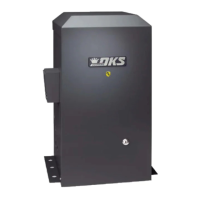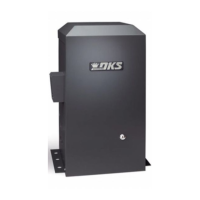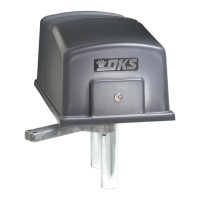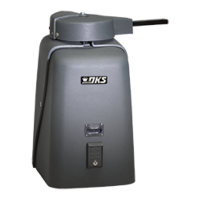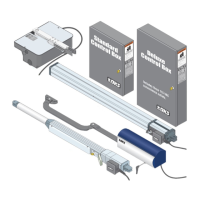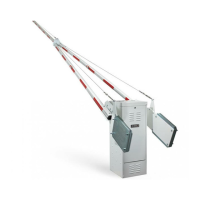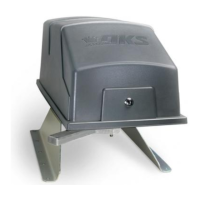Installation/Owner’s Manual
Model 9050
Model 9050
Copyright 2009 DoorKing, Inc. All rights reserved.
TM
Copyright 2011 DoorKing, Inc. All rights reserved.
Use this manual for circuit board 4702-010 Revision A or higher.
Date Installed:
Installer/Company Name:
Phone Number:
Leave Manual with Owner
Vehicular Slide Gate Operator
UL 325 Compliant
Circuit Board
Serial Number
and Revision Letter:
WARNING
MOVING GATE CAN CAUSE
Op
e
ra
te
ga
te on
ly
when g
a
t
e
area is in si
g
h
t
a
n
d
fre
e
of
p
e
o
p
le
a
n
d
o
b
s
truction
s
.
D
o
n
ot
a
llo
w child
ren
to play
in ga
te
a
r
e
a
or ope
rate
g
a
te.
Do
n
o
t
s
ta
n
d
in g
ate
p
a
th or walk
throu
g
h
path w
h
ile
gate is moving
.
Re
ad
owne
r’s
man
u
a
l
a
nd
s
afety
instructions.
SERIOUS INJURY OR
DEATH
CLASS
CERTI
FIED TO
CAN/CSA C22.2 NO. 24
7
C
ONF
ORM
S TO
ANSI/UL-325
VEHI
CULAR GATE OPERATOR
HP
5
3382
MODEL
SERIAL
VOLTS
PHASE
AMPS
60
Hz
MAX GAT
E LOAD
DoorKing, Inc., I
n
gl
e
w
ood, CA
9050-065-P-9-11
